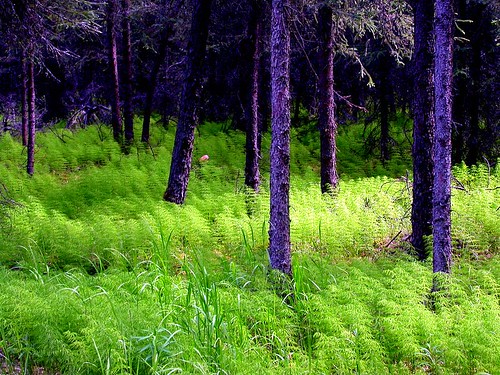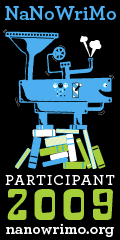Did I say a couple days ago that a bunch of books including Spaceflight Life Support and Biospherics by Peter Eckart (Microcosm, 1997) that cover topics I need to know a bit more about to write the story universe of Long Dark & Cold were on their way to me & should be here by Wednesday?
Why, yes. I did. “Sublight,” quoth I, “but still pretty damn fast.” In fact they got here a full day ahead of Wednesday.
Given the importance of biospherics to the story universe I’m writing, I’ve temporarily set aside Centauri Dreams, which I’m about one-third of the way through, & started in on Eckart’s book. So far I’m finding it even more helpful than I thought it would be, & I’m not even into the CELSS stuff yet, other than whatever I gleaned on a fast page-through before sitting down to read it properly.
Some historical background: biospherics as a name for the study of closed ecological systems was first discussed in July 1987 at the First International Conference on Closed Life Systems hosted by the Royal Society in London; & was adopted unanimously by delegates from Russia, the European Space Agency, the United Kingdom, & the U.S. at the Second International Conference on Closed Life Systems in September 1989 in Krasnoyarsk, Siberia. (p. 2) Eckert’s book Life Support and Biospherics, published in 1994, was the first book that summarized knowledge on the topic; Spaceflight Life Support and Biospherics, published in 1996, is an update of that book.
What I didn’t expect is that a book on spaceflight life support would begin with a chapter talking about the fundamentals of the first biosphere, Earth itself. But get into it: it makes sense. It’s Earth’s ecological characteristics that any life support system will have to imitate to a lesser or greater degree. Traditional spaceflight life support systems — physico-chemical systems — are on the lesser end of the scale: while they are well-understood & (relatively) easy to engineer, they don’t replenish themselves, & require an umbilical cord of resupply to keep their occupants alive. Greater: well, that’s where you’re getting into closed ecosystem life support systems (CELSS). I’ve tended to think of them as being closed in the sense of them being inside an enclosure of some sort — a spaceship, a space station, a habitat on the Moon or Mars — but I’m starting to get that Eckart (& others who study this stuff) especially mean closed in the sense that they’re self-sustaining: ideally speaking, they don’t require inputs from outside themselves.
So far, best I can tell, the only truly closed ecosystem life support system we know of that’s really worked has been Biosphere 1: the Earth. Experiments like Bios 1, 2, & 3 or Biosphere 2 have been just that: experiments to refine our knowledge — one day, it’s to be hoped, we’ll know how to build a small spaceship or space-colony-sized CELSS that will work. Of course, my story universe assumes that we do.
Now, again, I’m early in the book — haven’t gotten to the CELSS chapters, not even to the physico-chemical LSS chapters — heck, haven’t even gotten to the end of the Earth as an LSS chapter. But there I was sitting on the bus today on my way from work to my dental appointment, & Eckart reminded me of a fact that I first heard so clearly stated by the Canadian environmentalist David Suzuki: most of what keeps us alive on spaceship Earth, we get for absolutely nothing. Eckart:
In fact, man is able to breathe, drink, and eat in comfort, because millions of organisms and hundreds of processes are operating in a coordinated manner out there in the environment. Life support is provided by a vast, diffuse network of processes operating on different time scales. Unfortunately, there is a tendency to take nature’s services for granted because no money has to be paid for most of them. (p. 13)
But once you decide you want to take a big jump out of the gravity well, you can’t take any of it for granted. Not least because it costs a lot in money, energy, work to rocket one’s way up into outer space, & to rocket everything one needs to keep one alive up as well.
It’s really pretty sobering when you think about it. How much we get for free, just because nature is kind enough to provide it. Next, notice how increasingly services that are given freely — that are part of the Commons belonging to all of us — are being claimed as property by this or that human entity, & especially, in recent years, by the fake persons known as corporations. Patenting seeds? Patenting the human genome? Claiming intellectual or other property rights over stuff they didn’t do diddly to develop? What bollocks.
That political element of the division of nature into property & my rejection of treating corporations as legal persons do have a part in what I’m writing. But even more pertinent at the moment: the simple fact that in outer space, you can’t take life support for granted. All my characters from Long Dark and Cold have lived — up until the moment that they successfully terraform the planet (still without a name, still just called XXXX) in Cold — in a situation wherein they’re unable to take life support for granted. Even once CELSS has been developed to the point of making long space voyages possible, those systems will always need constant monitoring by humans or their tools (computers, AIs, whatever): intervention in thought & deed, if not by way of CARE packages or an umbilical cord or resupply from Mother Earth.
Such thoughts popped a lot more quickly into my head on the bus today than it took to write them up just now. And so I quickly found myself thinking about Pina Chomko.
Pina Chomko is a character I invented two years ago during NaNoWriMo 2007 for Cold. She’s important: not only as one of Bolyen Maheshwari’s most influential teachers & mentors, but also in her own right as one of the first inhabitants of (damn, I really need to give my planet a name!) XXXX. She’s an ecologist — more specifically, a planetary ecologist: & that’s pretty kooky really when you stop to consider that she was born in a spaceship or space station aloft; all her ancestors to 5 or 6 or 7 generations back also lived in spaceships or other closed habitats; & she never set foot on a planet until she was upwards of age 25. Until then, all her knowledge of a planetary ecology was theoretical stuff that came out of books (or, more properly, Library) or came from other people whose whole knowledge came out of books/Library.
She has never been able to take life support for granted. Her dream is to do so. To seed the planet & let it grow not under her watchful eye.
Next thing you know, I was laying back in the dentist’s chair thinking about Pina Chomko & how I’m going to fill out her story.
It’s not easy to write a story when you’ve got two people’s hands in your mouth. But I made some good headway.


